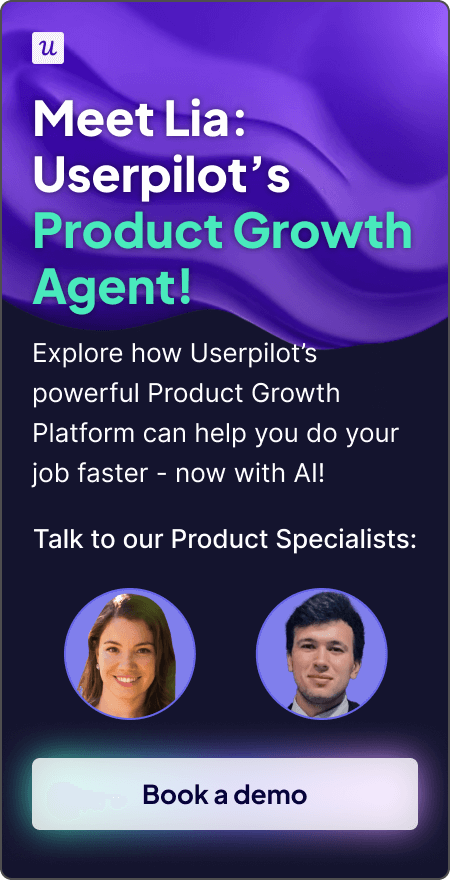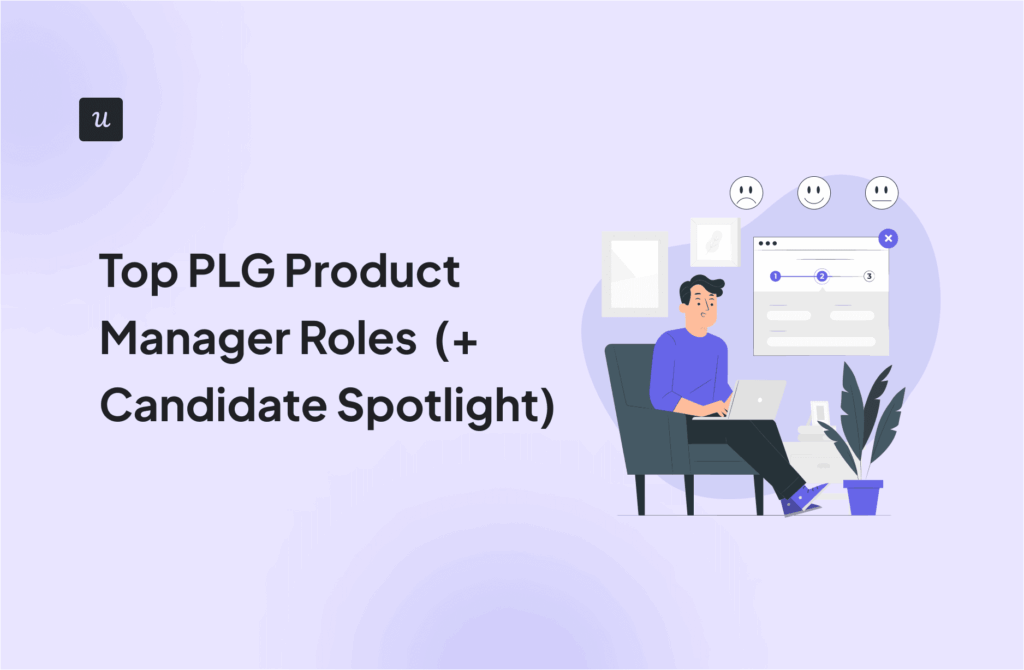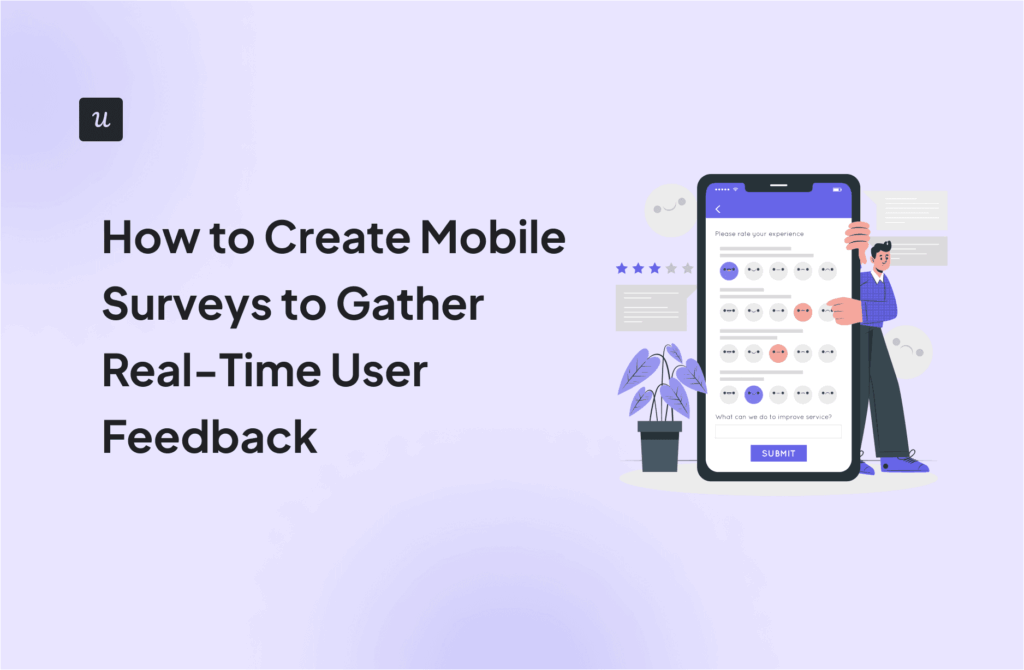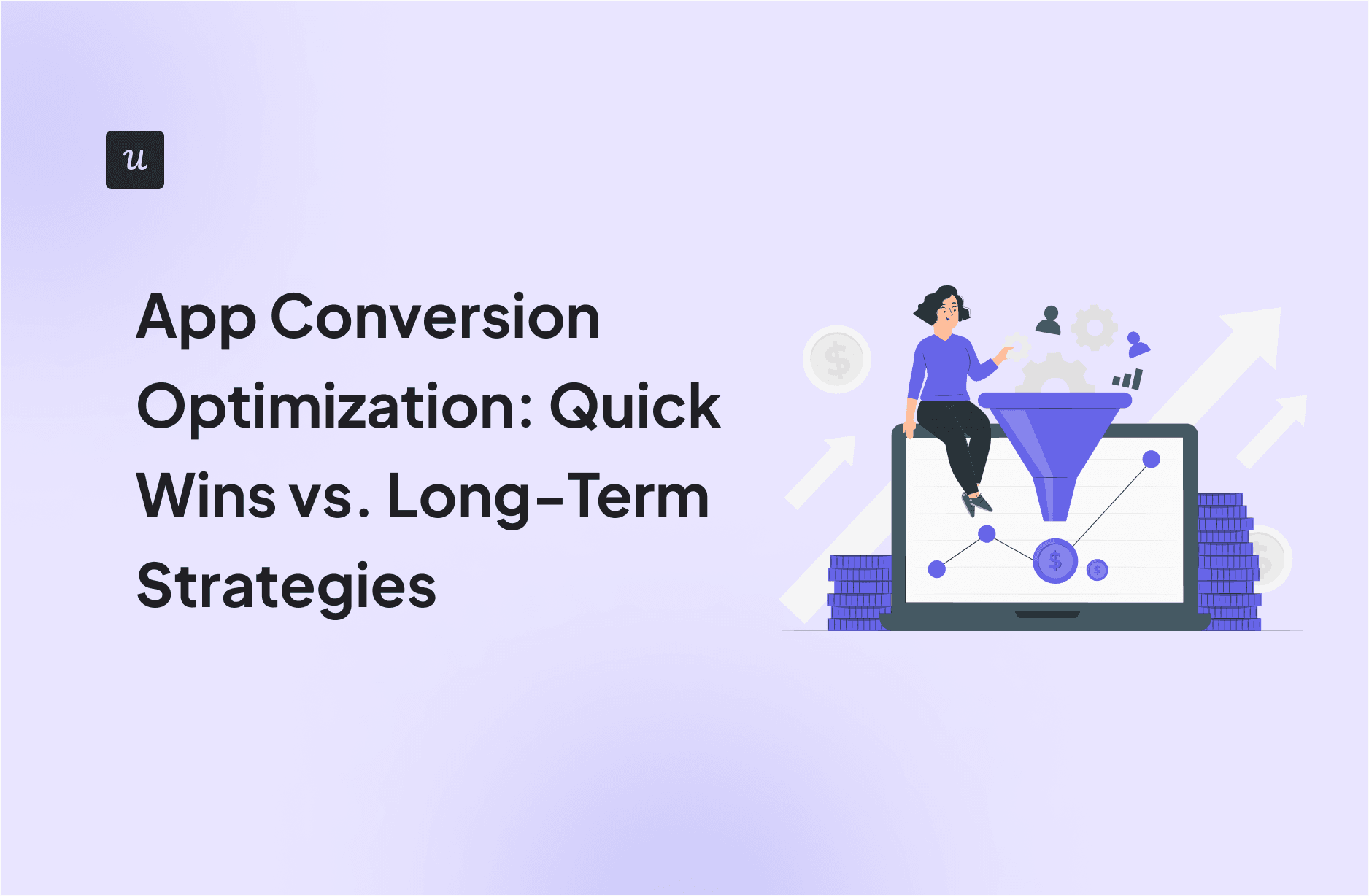
In 2008, when the App Store launched with just 500 apps, app conversion meant simply having a functioning product, and users would stick around on their own. Today, with over 5 million apps competing for attention, the game has fundamentally changed.
Nowadays, to win over users and make a profitable app, you need a comprehensive product growth strategy balancing quick wins with long-term strategies that build lasting advantage.
As a product manager with over a decade of experience, I know how hard it can be to find this sweet spot. To make your job easier and help you hit these monthly KPIs, I’ve put together my best tips for optimizing conversions in this blog post. But first, let’s over some basics to make sure we are on the same page:
What’s your primary goal for app conversion optimization?
Understanding your main objective helps tailor the user journey.
How do you currently guide users to discover valuable features?
Feature discovery is crucial for long-term retention and upgrades.
How do you collect user feedback to find conversion bottlenecks?
Direct feedback is a goldmine for identifying points of friction.
Unlock Your App’s Full Conversion Potential
Effective app conversion optimization isn’t about one-off fixes—it’s about creating a continuous cycle of improvement. Userpilot empowers you to perfect every stage of the user journey, from personalized onboarding to contextual feature adoption and targeted feedback collection.
Try Userpilot Now
See Why 1,000+ Teams Choose Userpilot
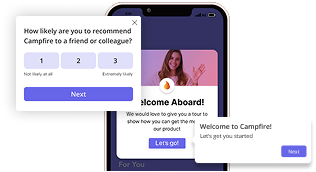
What is an app conversion?
A mobile app conversion rate (CVR) tracks the percentage of your app’s users who took a desired action, such as downloading your app, turning from a free trial to a paid user, engaging with a specific feature, or completing another predefined goal.
With this in mind, app conversion rate optimization (CRO) refers to any action taken to improve the percentage of users who complete a specific action within your app.
By optimizing app conversion rates, you can reduce customer acquisition costs while increasing revenue.
What is a good conversion rate for an app?
Let’s get this straight: there is no universal good conversion rate; it varies greatly based on industry, app type, and goals.
However, there are some general benchmarks you can use to establish a baseline, such as:
- App store conversion rate (store visitors → downloads): ~30-40% (iOS) & 25-35% (Android)
- Trial-to-paid conversion rate (freemium model): 5-15%
- In-app purchase conversion rate: 1-5%
Following these benchmarks, for example, we can conclude that a 7% CVR for in-app purchases is excellent for in-app purchase conversion, but the same mark is poor for app store conversion.
My top 10 app conversion optimization strategies
Withour further delay, let’s go over the tried and tested strategies I used to drive app conversions:
1. Optimize app store presence
First impressions matter, especially in crowded app stores where users make split-second decisions.
A compelling app store presence not only boosts visibility but acts as your app’s digital storefront, attracting the right users who are more likely to convert.
Here are some ways to do it:
- Use high-quality visuals (app screenshots, app preview videos, and other creative assets) to showcase what your app is made of.
- Write a clear, keyword-rich app title and description. Use bullet lists to break up walls of text and keep the writing engaging.
- Use a benefits-oriented language that explains how your app’s features deliver value to the user.
2. Improve app performance
Your app’s performance directly impacts its user experience, which, in turn, impacts your conversion rate.
Slow apps, for example, disrupt the user experience, leading to lower user engagement and higher bounce rates. In fact, as one study found, increasing the load times of mobile app pages by just 1 second can lead to a 27% increase in conversion rate.
Now, there are different strategies you can follow to optimize your app’s performance:
- Optimize your app’s resources: Compress your app’s images and videos and streamline its code to reduce load times.
- Implement local caching: Cache data locally to speed up content delivery after the first load.
- Address bugs: Bugs suck the fun out of your app’s user experience, so ensure you identify and fix them promptly.
3. Simplify the onboarding experience
While you might be tempted to design a robust onboarding process that showcases every single shiny feature your app has, it couldn’t be a worse move. New users don’t care about trying out all 20 features.
All they want is to ensure your app delivers on the promise and helps them get their primary job done, for which they’ll most likely need two or three features.
This means your onboarding flow should be focused and help new users experience value right away. And for that to happen, you need to know the exact objective users are trying to achieve with your app. You can get this information by launching a quick welcome survey as part of your signup flow.
Once you have this information, you can segment users based on it and trigger a tailored flow for that specific use case.
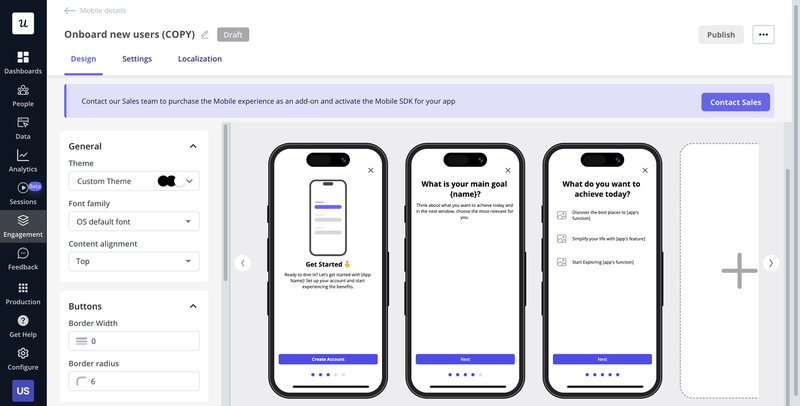
4. Leverage contextual in-app messages
As users settle into your app, you need to keep the momentum going with in-app communication.
The key is crafting messages that are timely, relevant, and behavior-based instead of sending them randomly.
Here are some ways you can use in-app messages to build a connection with users and drive conversions:
- Announce new features right when users are most likely to benefit from them.
- Deliver time-sensitive promotions or offers to drive urgency and action.
- Celebrate user milestones (like completing a challenge or hitting a streak) to reinforce positive behaviors.
- Trigger helpful nudges if users are stuck or dropping off at key moments to guide them.
With Userpilot, you can seamlessly create, customize, and deploy these in-app messages based on user behavior, device type, or past interactions, all without requiring engineering time.
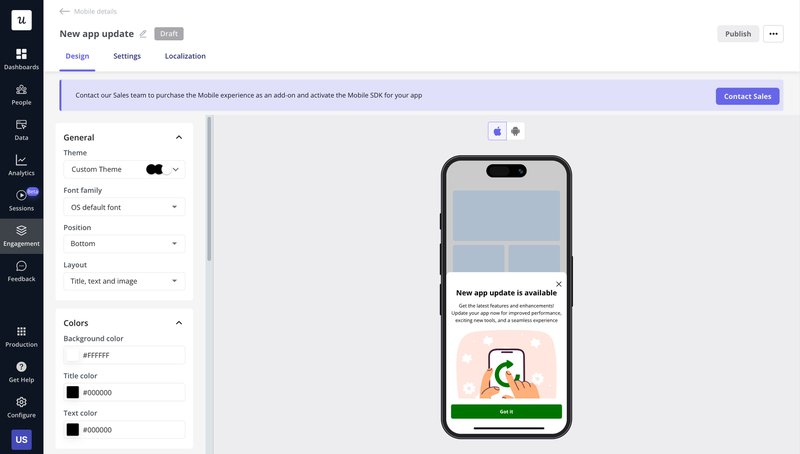
5. Use push notifications strategically
Push notifications can be a powerful tool, prompting users to complete key actions, reduce churn, and drive timely engagement that leads to conversions. This is, if you apply them strategically.
First, remember that timing is everything. Instead of sending messages at random times, trigger them based on real user behavior, such as following up after someone abandons a flow or needs a reminder during onboarding.
More importantly, every push should offer clear value. Whether it’s highlighting a feature they’ve missed, reminding them of an unfinished setup, or surfacing a time-sensitive offer, your message should always answer the question: “What’s in it for the user?”
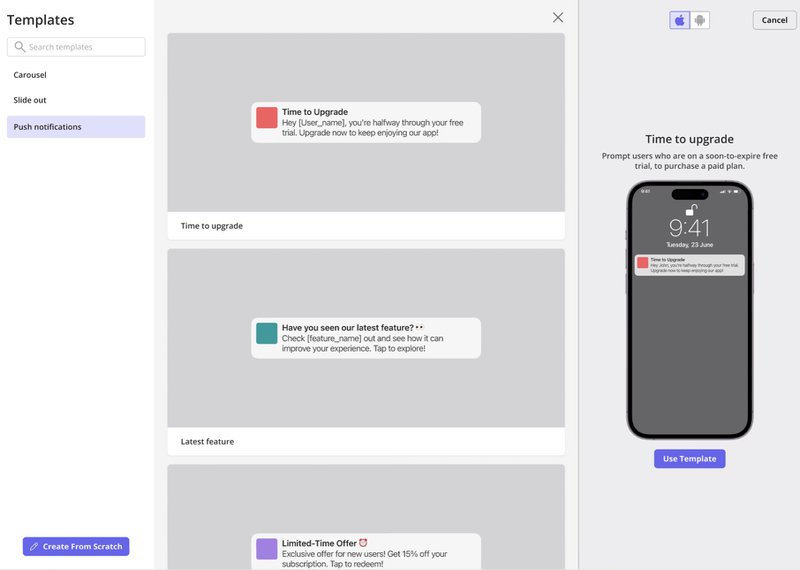
6. Localize your mobile app
Localization is yet another personalization tactic that involves adapting the app to different target markets’ cultures.
The simplest and most common form of localization in mobile apps is translating the language of the app’s content into the target user’s language.
If that’s something you are interested in, a digital adoption platform like Userpilot enables you to automatically translate all your in-app flows with a click of a button. You don’t need any developer or translator help, you won’t even need to create a new flow from scratch.
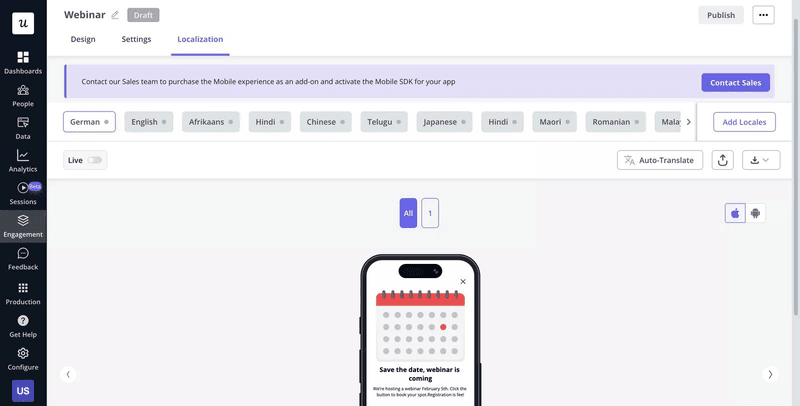
Though keep in mind that localization goes beyond simply translating app text. It involves analyzing and adopting cultural preferences (app icons, color schemes, layouts, etc.), local best practices, and other cultural sensitivities.
A good example of a properly implemented localization of a global product is Airbnb. The app boasts over 220 locales and 60+ languages. For each, the app has localized everything from payment methods to the app’s UI and content.
For example, former Language Manager at Airbnb, Ge Zhongjun, notes that to localize the app within the Chinese market, they did the following:
- Enabled Alipay and WeChat Pay.
- Used Chinese maps.
- Launched WeChat mini-apps.
- Set up servers in China.
- Refined hosting and listing formats to make it easier for Chinese hosts and guests.
- Adopted Chinese marketing tactics.
A similar practice was followed for each locale. The result? Airbnb became a global product by ensuring they were always a local product.
7. Offer meaningful incentives
Here’s a simple truth: humans love rewards. As a product manager, you can and should use this information to your advantage.
But choosing a reward that’s a win-win for both sides can be tricky. While many companies use Amazon gift cards by default, I would highly discourage using them. Sure, they are easy to implement for the company and exciting for most users, as it gives them the option to get practically anything they need from the biggest online store.
But gift cards won’t necessarily help you drive strategic conversions. Users may complete basic actions you encourage, like filling out a survey or inviting a friend to your app, but that’s about it. It’s unlikely that a gift card can make users make bigger commitments, such as an upgrade to higher plans.
If you want a lasting impact, offer rewards that deepen a user’s relationship with your product. For example, grant temporary access to premium features. This not only highlights the additional value your product offers but also increases the chances that users will convert once they’ve experienced the benefits firsthand. Incentives should not just create a moment of excitement, they should create momentum.
8. Implement A/B tests at different touchpoints
A/B testing is one of the most effective tools in your optimization arsenal. It enables you to move beyond assumptions and make confident, data-backed decisions that meaningfully enhance user experience and drive higher conversion rates.
To run impactful A/B tests, follow a structured approach:
- 1. Define a clear objective: Begin with a specific goal in mind. What metric are you aiming to improve: onboarding completion, CTA click-throughs, or notification open rates?
- 2. Isolate a single variable: Focus on testing one element at a time to ensure your insights are clear and actionable.
- 3. Create and launch variations: Leverage reliable A/B testing tools to deploy different versions of your app experience to segmented user groups.
- 4. Measure and iterate: Analyze results for statistical significance. Once a winning variant is identified, implement it and iterate as needed.
9. Collect and act upon user feedback
User feedback is a goldmine for uncovering what’s holding people back from converting. Whether it’s a confusing flow, unclear messaging, or missing functionality, your users will tell you if you ask the right way.
But don’t just collect feedback—act on it. When users take the time to share their frustrations, it’s a chance to win them back. Addressing the root causes behind negative feedback not only improves your product, it also shows users you’re listening. That kind of responsiveness builds trust and drives conversions.
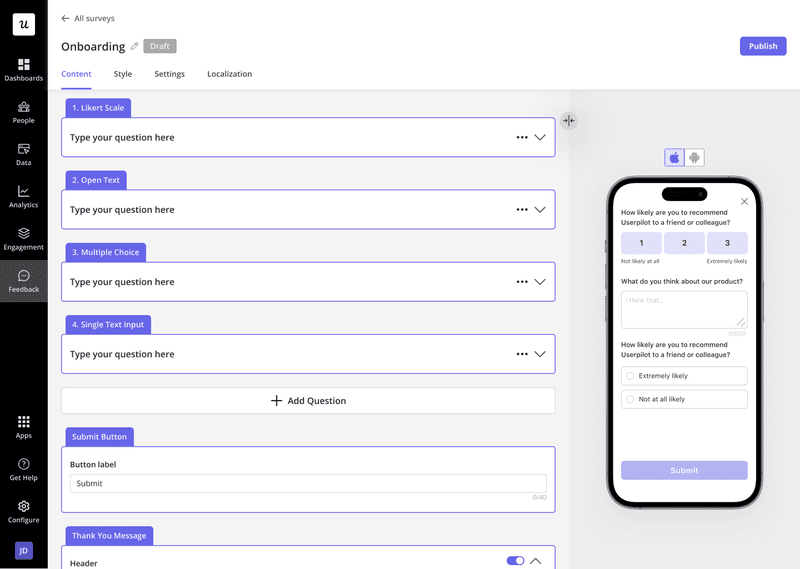
10. Analyze user behavior to identify bottlenecks
The final, most important step towards conversion rate optimization is analyzing user behavior and answering questions like:
- Which screens do they spend the most time on?
- Where do they drop off?
- What features do they use the most/least?
With a unified mobile analytics tool like Userpilot, you can easily track screen views, funnel drop-offs, and other custom events to pinpoint areas for improvement.
As you make changes to the product, you can also track changes in user behavior to measure the impact of those changes.
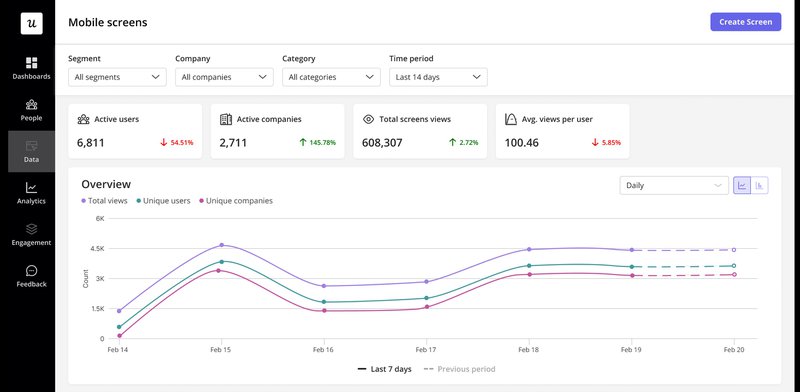
Supercharge your app conversion optimization with Userpilot
App conversion optimization isn’t a one-time ask; it’s a continuous journey of refinement and adaptation.
A tool like Userpilot can help optimize conversion rate at different stages of the user journey. You can create personalized in-app onboarding flows, analyze their performance, and deploy contextual push notifications all from one place, and most importantly, without any developer support.
Want to get started? Book a demo today to learn more!
FAQ
What is conversion optimization?
Conversion optimization is the tactics and strategies used to increase the percentage of users completing desired actions within your app.
How to increase app conversion rate?
To increase the conversion rate, there are different approaches you can take, such as:
- Streamlining your app onboarding.
- Optimizing your app store listing.
- Using in-app messages to prompt the desired action.
- Deploying push notifications to re-engage mobile users.
- Improving your app’s speed and performance.
Is a 7% conversion rate good?
A 7% conversion rate for a mobile app is generally above average. Most apps see 1–5%, so 7% suggests strong performance, especially if it’s install-to-signup or install-to-purchase. Context matters, though. For example, 7% might be on the lower end for trial-to-paid conversion.

